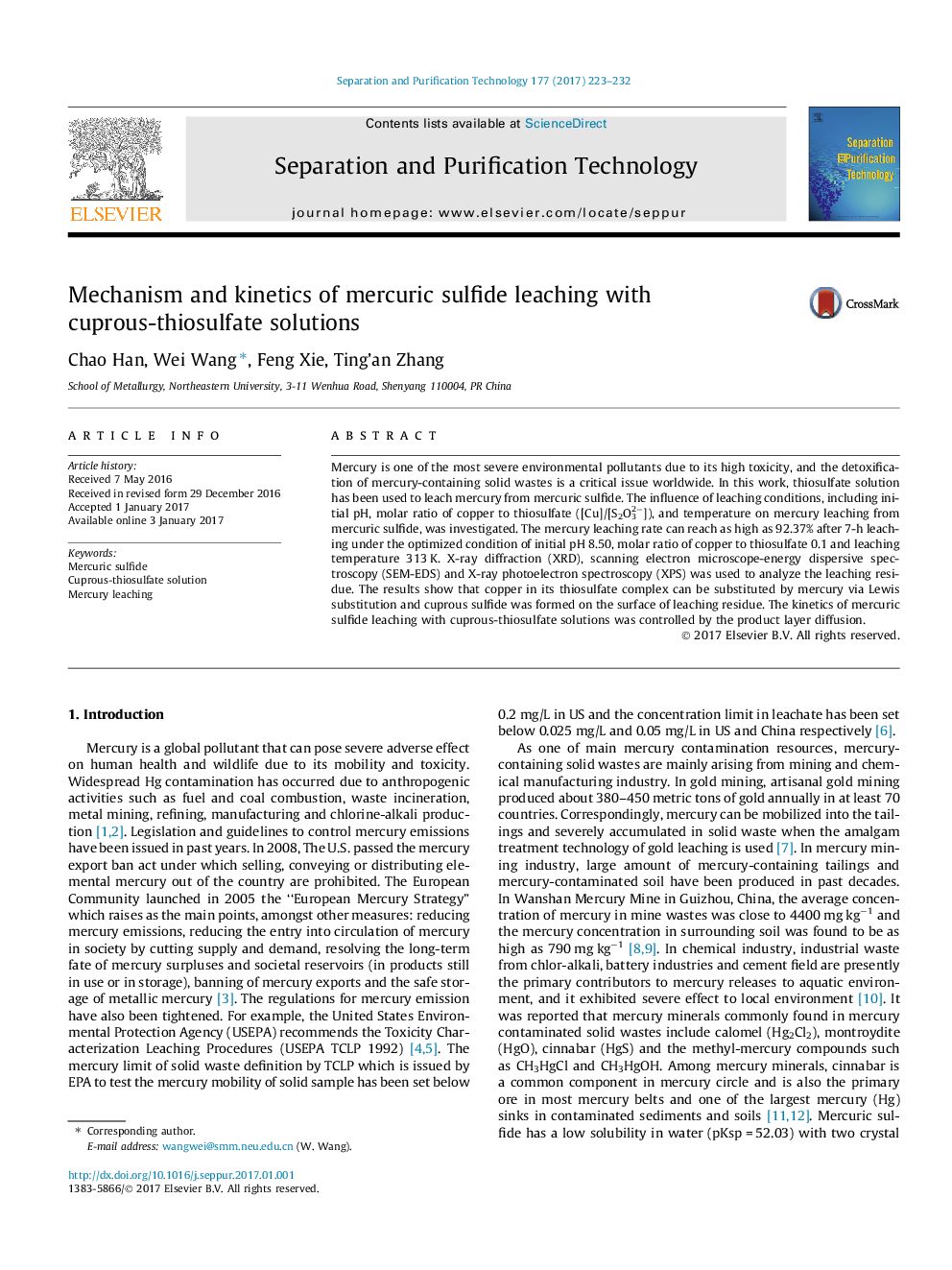| Article ID | Journal | Published Year | Pages | File Type |
|---|---|---|---|---|
| 4990138 | Separation and Purification Technology | 2017 | 10 Pages |
Abstract
Mercury is one of the most severe environmental pollutants due to its high toxicity, and the detoxification of mercury-containing solid wastes is a critical issue worldwide. In this work, thiosulfate solution has been used to leach mercury from mercuric sulfide. The influence of leaching conditions, including initial pH, molar ratio of copper to thiosulfate ([Cu]/[S2O32â]), and temperature on mercury leaching from mercuric sulfide, was investigated. The mercury leaching rate can reach as high as 92.37% after 7-h leaching under the optimized condition of initial pH 8.50, molar ratio of copper to thiosulfate 0.1 and leaching temperature 313Â K. X-ray diffraction (XRD), scanning electron microscope-energy dispersive spectroscopy (SEM-EDS) and X-ray photoelectron spectroscopy (XPS) was used to analyze the leaching residue. The results show that copper in its thiosulfate complex can be substituted by mercury via Lewis substitution and cuprous sulfide was formed on the surface of leaching residue. The kinetics of mercuric sulfide leaching with cuprous-thiosulfate solutions was controlled by the product layer diffusion.
Related Topics
Physical Sciences and Engineering
Chemical Engineering
Filtration and Separation
Authors
Chao Han, Wei Wang, Feng Xie, Ting'an Zhang,
